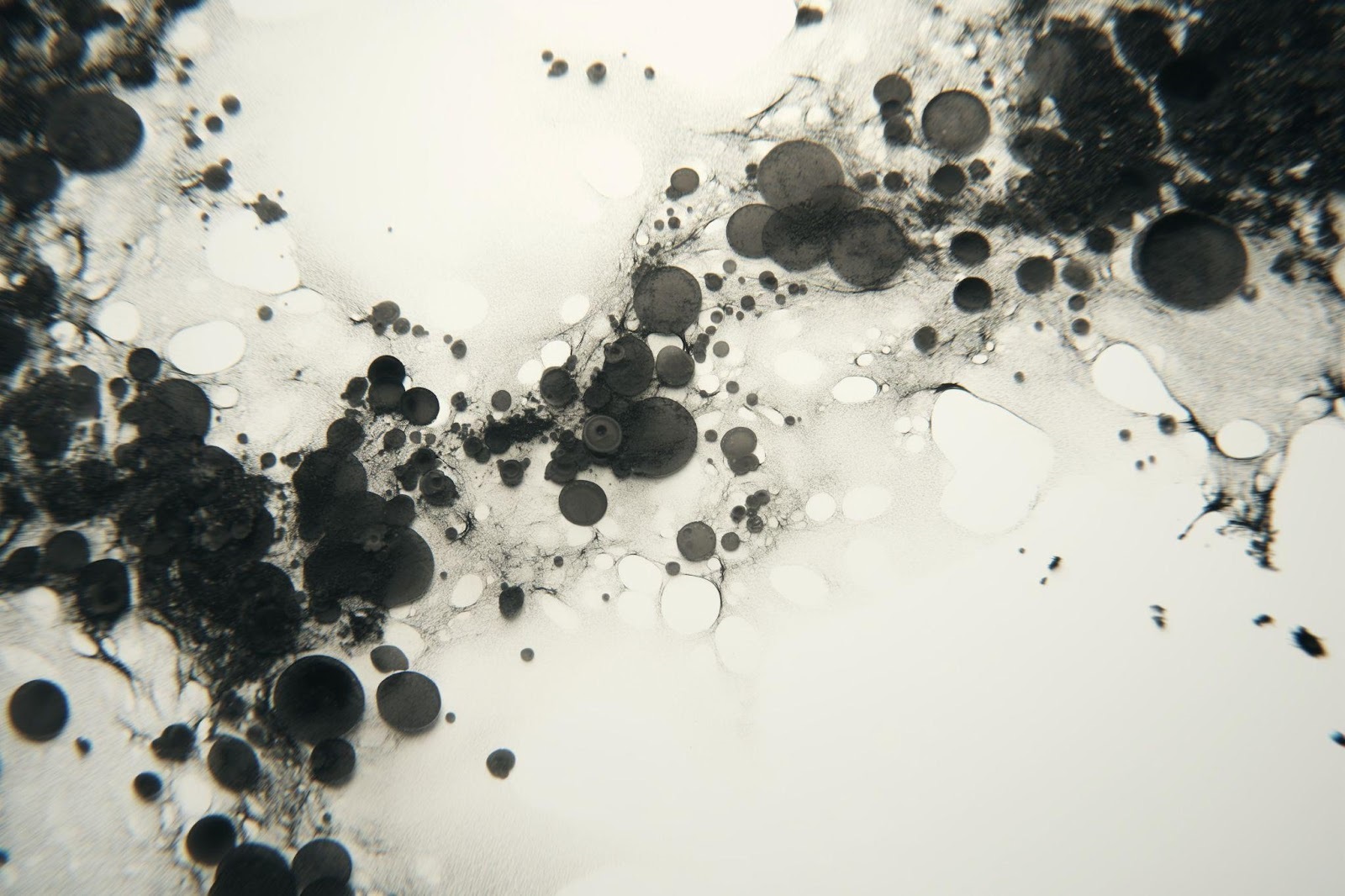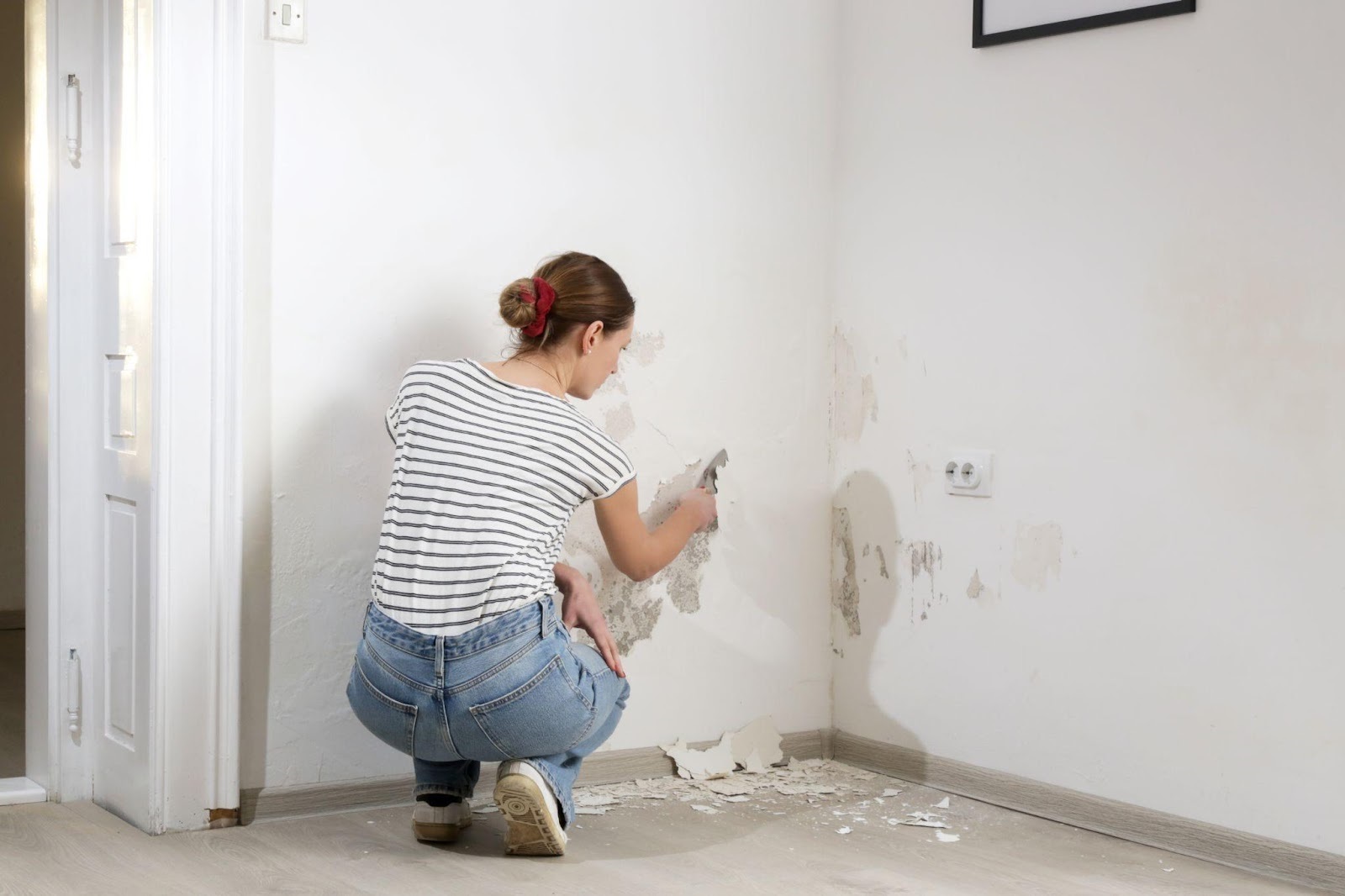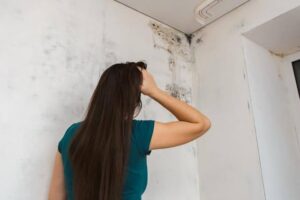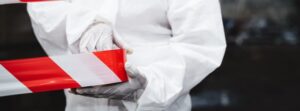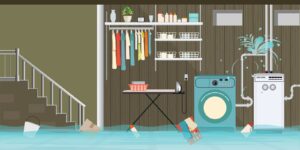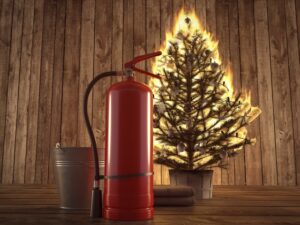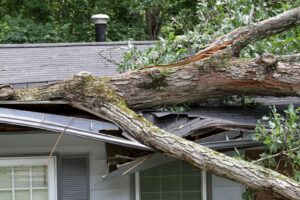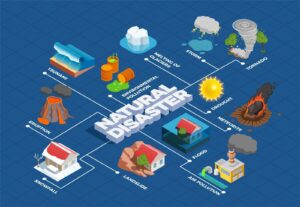With its dry summers and wet winters, Utah’s climate creates ideal conditions for mold growth in homes. Despite the arid environment, mold thrives in poorly ventilated, humid, or water-damaged areas, from basements to bathrooms.
Mold is unsightly, but more importantly, it poses serious health risks and causes significant structural damage. Mold spores trigger allergies, respiratory issues, and more severe health problems in vulnerable individuals. Ignoring mold leads to worsening conditions and costly repairs.
Through this blog, you will learn to identify mold, take immediate action, and prevent future growth, ensuring your home remains mold-free and healthy.
Common types of mold found in Utah
Black Mold (Stachybotrys)
Black mold, also known as Stachybotrys, is notorious for its slimy, greenish-black appearance. It thrives in damp, cellulose-rich materials like wood, drywall, and paper.
This mold emits a musty odor and poses severe health risks, including respiratory issues, chronic fatigue, and headaches. Prolonged exposure can lead to more serious conditions, such as pulmonary hemorrhage in infants and memory loss in adults.
Penicillium
Penicillium mold appears as blue or green fuzzy patches and grows rapidly on water-damaged materials like carpets, wallpaper, and insulation. This mold is common in areas with high humidity, such as bathrooms and kitchens. While Penicillium is known for producing antibiotics, its presence in homes can cause allergic reactions, sinus infections, and lung inflammation.
Aspergillus
Aspergillus comes in various colors, including green, yellow, and brown, and has a powdery texture. It’s commonly found in decaying organic matter and damp, dust-prone areas like basements and air conditioning systems.
Health implications include respiratory infections, allergic reactions, and, in severe cases, invasive aspergillosis, which affects individuals with weakened immune systems.
Cladosporium
Cladosporium appears as dark green or black spots and is often found on damp wood, carpets, and fabrics. It thrives in both cool and warm environments, making it a frequent invader of home HVAC systems. While Cladosporium exposure typically causes mild allergic reactions, it can also lead to asthma attacks and skin infections.
Alternaria
Alternaria is recognizable by its dark green or brown velvety texture. It grows both indoors and outdoors, favoring damp areas like showers, under sinks, and around window frames. This mold is notorious for causing allergic reactions, including hay fever-like symptoms, asthma, and skin rashes. It can also exacerbate chronic respiratory conditions in sensitive individuals.
Understanding these common types of mold and their characteristics helps in identifying and addressing mold problems effectively. Each type presents unique challenges, but prompt and thorough remediation ensures a healthier living environment.
Causes and conditions for mold in Utah
Climate factors contributing to mold growth
Utah’s unique climate, with its dry summers and wet winters, sets the stage for mold growth. The state’s arid conditions might seem to deter mold, but periods of rain and snow create pockets of moisture perfect for mold proliferation. These fluctuations between dry and wet conditions make mold prevention a year-round challenge.
Common sources of moisture
Mold thrives in moist environments, and common sources of moisture in Utah homes include leaks, humidity, and condensation. Leaky roofs, plumbing issues, and poor ventilation are prime culprits.
Humidity levels often rise in bathrooms, kitchens, and basements, while condensation forms on windows and walls during colder months. Any untreated moisture creates an ideal breeding ground for mold.
Impact of seasonal changes on mold proliferation
Seasonal changes significantly impact mold growth. During winter, snow and rain can seep into homes through cracks and gaps, leading to hidden moisture accumulation. Spring brings melting snow and increased rainfall, further raising moisture levels.
Summer’s heat can drive humidity indoors, especially in poorly ventilated spaces, while fall’s cooler temperatures can cause condensation on surfaces. Each season presents unique challenges, requiring vigilant mold prevention efforts.
Staying proactive and addressing moisture issues promptly ensures a healthier, mold-free living environment.
Identifying mold in your home
Mold makes itself known through visual signs and distinctive odors. Look for discolored patches on walls, ceilings, or floors, often in shades of black, green, or white. Peeling paint, warping surfaces, and persistent water stains also indicate mold presence. The musty, earthy smell of mold is unmistakable, lingering in the air and signaling hidden growth even when it’s not visible.
Importance of professional mold inspection
While spotting mold visually or through odor is a good start, professional mold inspection provides a thorough evaluation. Experts use advanced tools to detect hidden mold in walls, under floors, and within HVAC systems. They assess the extent of contamination, identify the mold type, and determine the root cause.
Professional inspections ensure accurate identification and a comprehensive plan for effective remediation, safeguarding your home and health.
DIY mold testing kits: pros and cons
DIY mold testing kits offer a convenient way to check for mold at home. They are cost-effective and provide quick results, giving you a snapshot of potential mold issues.
However, they have limitations. DIY kits might not detect hidden mold or accurately identify mold types, leading to incomplete or misguided remediation efforts. Professional testing is more reliable, providing a detailed analysis and ensuring thorough mold removal.
Effective mold remediation strategies
Immediate steps to take upon discovering mold
Upon discovering mold, act quickly to contain the problem. Isolate the affected area by closing doors and windows and turning off HVAC systems to prevent spores from spreading. Wear protective gear such as gloves, masks, and goggles to avoid direct contact.
Remove any visible mold with soap and water or a mild detergent, but avoid using bleach, which may make the problem worse. Document the extent of the mold for professional assessment and insurance purposes.
Professional mold remediation vs. DIY approaches
Deciding between professional mold remediation and DIY approaches depends on the severity of the infestation. Small, localized mold can be managed with DIY methods, but extensive mold growth requires professional intervention.
Professionals have the tools, expertise, and experience to thoroughly eliminate mold and prevent recurrence. They can also identify hidden mold and address underlying issues that DIY methods might miss.
Importance of addressing the source of moisture
Addressing the source of moisture is crucial in mold remediation. Mold thrives in damp environments, so eliminating moisture prevents mold from returning. Fix leaky pipes, roof leaks, and any water intrusion points.
Improve ventilation in damp areas like bathrooms and kitchens. Use dehumidifiers to maintain optimal indoor humidity levels. Without addressing the moisture source, mold will keep coming back, regardless of cleanup efforts.
Detailed steps in the professional remediation process
Professional mold remediation follows a systematic process to ensure thorough and lasting results.
- Inspection and assessment: Experts conduct a comprehensive inspection to identify all affected areas and determine the mold type and extent of contamination.
- Containment: They isolate the contaminated areas to prevent mold spores from spreading during the cleanup process.
- Air filtration: High-efficiency particulate air (HEPA) filters and air scrubbers remove mold spores from the air, ensuring a cleaner and safer environment.
- Mold removal: Professionals use specialized equipment and techniques to remove mold from surfaces and materials. This includes scrubbing, sanding, and using antifungal and antimicrobial treatments.
- Cleaning and sanitizing: Thorough cleaning of all affected and adjacent areas, including personal items, furniture, and HVAC systems, ensures no traces of mold remain.
- Restoration: Depending on the extent of the damage, this may involve minor repairs like replacing drywall and carpet or major reconstruction if structural damage has occurred.
Effective mold remediation requires immediate action, professional expertise, and addressing the moisture source. By following these strategies, you will ensure a mold-free, healthy living environment.
When to call a professional
Call a professional if mold covers more than 10 square feet, is hidden behind walls, or results from contaminated water. Persistent mold, despite cleaning, also signals a need for expert help.
Choose a certified mold remediation company with good reviews and experience. Verify references, ask for a detailed plan, and ensure transparent pricing. A reputable company effectively handles mold issues.
When mold issues go beyond DIY capabilities, trust the experts at Total Flood and Fire Restoration. Our certified team provides thorough inspections, effective remediation, and long-term solutions to keep your Utah home mold-free. Contact Total Flood and Fire Restoration 24/7 for professional and reliable mold remediation services.

